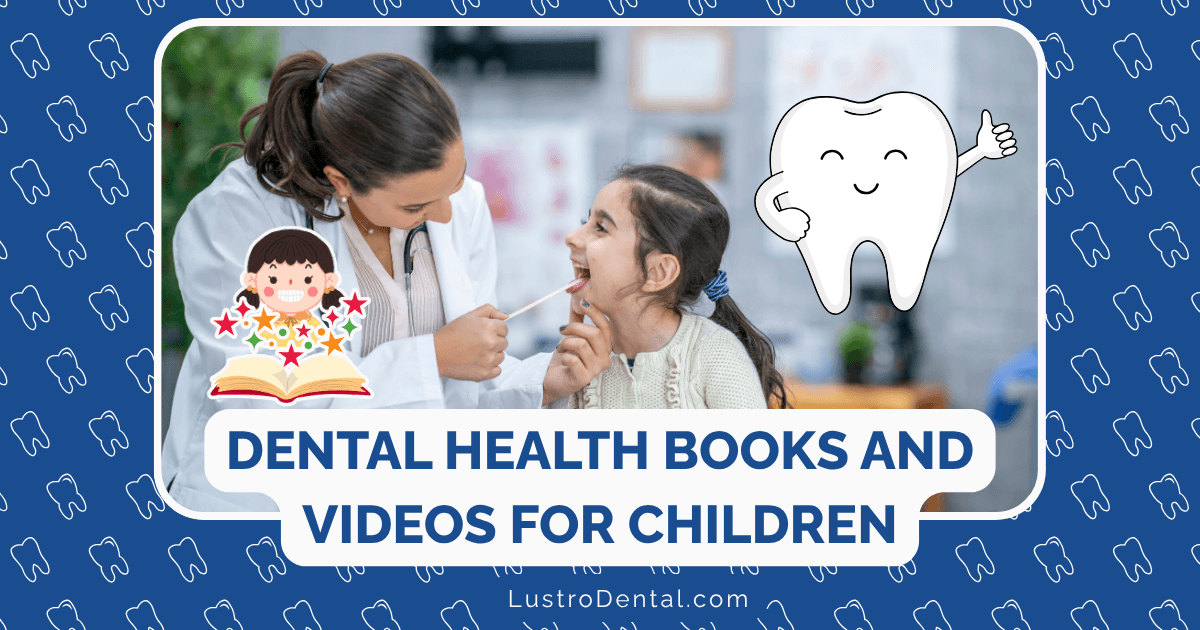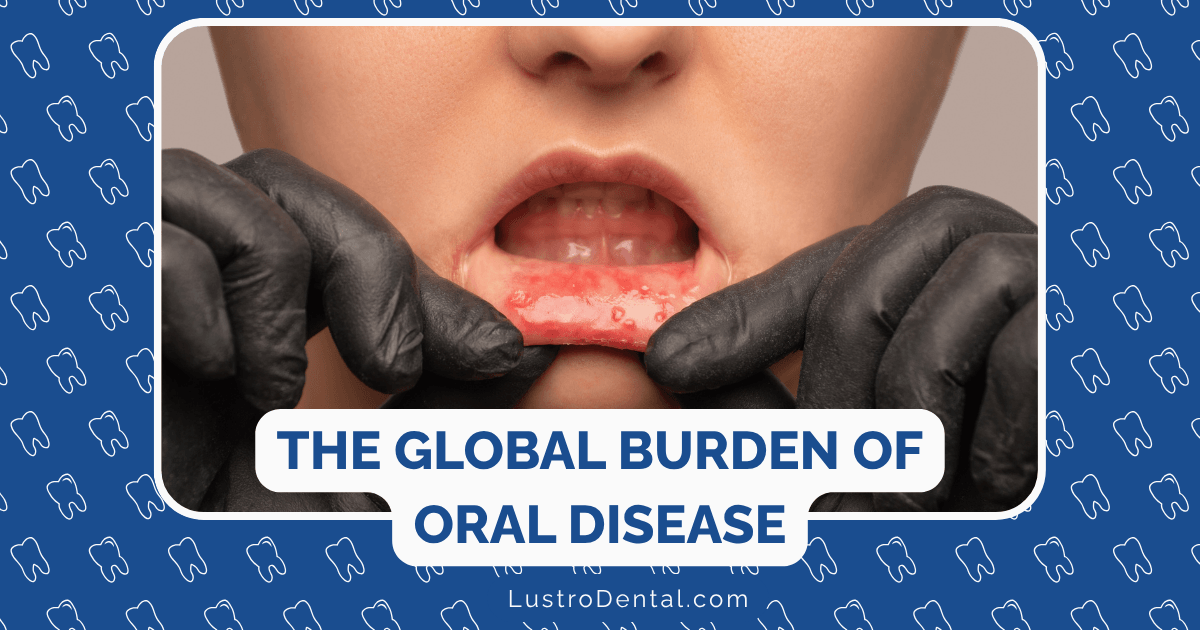Dental Health Books and Videos for Children: Top Recommendations

Teaching children about dental health doesn’t have to involve lectures about cavities and flossing. Today’s parents and educators have access to a wealth of engaging, age-appropriate books and videos that make learning about oral hygiene both fun and educational.
From colorful picture books featuring beloved characters to interactive videos that demonstrate proper brushing techniques, these resources can transform dental care from a chore into an adventure. In this comprehensive guide, we’ll explore the best dental health books and videos for children of all ages, with insights on how to use them effectively.
Why Dental Health Education Matters for Children
Before diving into specific recommendations, let’s understand why early dental education is so crucial:
- According to the Centers for Disease Control and Prevention, tooth decay affects more than one in five children aged 2-5 years.
- Dental habits formed in childhood often persist into adulthood.
- Early positive associations with dental care can reduce anxiety about dentist visits.
- Understanding the “why” behind brushing and flossing increases compliance.
- Visual and narrative learning tools are particularly effective for young children.
The American Academy of Pediatric Dentistry recommends that dental health education begin as soon as a child’s first tooth appears, making age-appropriate resources essential for parents and caregivers.
Best Dental Health Books by Age Group
For Toddlers (Ages 1-3)
At this stage, simple, colorful books with minimal text work best. Look for board books that can withstand handling by little hands.
1. “Brush, Brush, Brush!” by Alicia Padron
What it’s about: This sturdy board book features adorable animals demonstrating tooth brushing with simple, rhythmic text.
Why it works: The repetitive language and bright illustrations capture toddlers’ attention, while the small size is perfect for little hands to hold during brushing time.
Teaching tip: Read this book while your toddler holds their toothbrush, encouraging them to mimic the brushing motions of the animals.
2. “Teeth Are Not for Biting” by Elizabeth Verdick
What it’s about: Part of the popular “Best Behavior” series, this book teaches appropriate behavior for teeth in a gentle, positive way.
Why it works: The simple text clearly explains what teeth are actually for (eating, smiling, talking) while addressing the common toddler behavior of biting.
Teaching tip: This book works well for establishing boundaries around teeth while simultaneously introducing their proper care.
3. “Elmo’s Brush Your Teeth!” by Naomi Kleinberg
What it’s about: Elmo demonstrates his tooth brushing routine in this Sesame Street board book with lift-the-flap features.
Why it works: Familiar characters like Elmo create immediate engagement, while the interactive elements keep toddlers interested through multiple readings.
Teaching tip: Use this during your bedtime routine, letting your child lift the flaps as a reward for cooperative brushing.
For Preschoolers (Ages 3-5)
Preschoolers can handle more complex stories and begin to understand the consequences of poor dental hygiene when presented in age-appropriate ways.
4. “The Tooth Book” by Dr. Seuss
What it’s about: This classic Dr. Seuss book explores all kinds of teeth in his signature rhyming style, from animal teeth to human teeth.
Why it works: The rhythmic, playful language makes learning about teeth fun, while the whimsical illustrations capture children’s imagination.
Teaching tip: After reading, have children identify different types of teeth (molars, canines) in their own mouths using a mirror.
5. “Pout-Pout Fish Goes to the Dentist” by Deborah Diesen
What it’s about: The popular Pout-Pout Fish character experiences his first dental visit with initial anxiety that turns to relief.
Why it works: Many children identify with the fish’s nervousness about dental visits, and the positive outcome helps alleviate fears.
Teaching tip: Read this book before a child’s first dental appointment to prepare them for what to expect.
6. “Sugarbug Doug: All About Cavities, Plaque, and Teeth” by Dr. Ben Magleby
What it’s about: Written by a dentist, this book explains cavity formation through the character of “Sugarbug Doug,” making the science accessible to young children.
Why it works: The personification of plaque as a character helps children understand an otherwise abstract concept, motivating them to brush “Sugarbug Doug” away.
Teaching tip: Pair this book with disclosing tablets that temporarily stain plaque, allowing children to see their own “Sugarbugs” before brushing them away.
For Early Elementary (Ages 6-8)
Children at this age can understand more detailed explanations and begin taking responsibility for their own dental care.
7. “The Berenstain Bears Visit the Dentist” by Stan and Jan Berenstain
What it’s about: Brother and Sister Bear visit the dentist for a checkup, with Sister Bear having her first loose tooth.
Why it works: The familiar Berenstain Bears characters help children relate to common dental experiences like loose teeth and dental visits.
Teaching tip: Use this book to discuss the concept of losing baby teeth and what to expect as permanent teeth grow in.
8. “How Many Teeth?” by Paul Showers
What it’s about: This informative book explains the science of teeth, including why we lose baby teeth and how adult teeth grow in.
Why it works: The straightforward explanations satisfy curious minds, while the illustrations help visualize concepts like roots and growth.
Teaching tip: Create a tooth-tracking chart to accompany this book, where children can record when they lose teeth and when new ones emerge.
9. “Doctor De Soto” by William Steig
What it’s about: A mouse dentist treats a fox with a toothache, despite foxes being natural predators of mice.
Why it works: This Newbery Honor book combines dental themes with a clever story about problem-solving and ethics.
Teaching tip: Use this book to discuss how dentists help people feel better, reducing anxiety about dental treatment.
For Older Elementary (Ages 9-12)
Older children can handle more detailed information about dental health and begin to understand long-term consequences.
10. “The Mouth With A Mind Of Its Own” by Pat Thomas
What it’s about: This book addresses common habits like thumb-sucking, nail-biting, and teeth-grinding, explaining their effects on dental health.
Why it works: The matter-of-fact approach respects older children’s ability to understand cause and effect without talking down to them.
Teaching tip: Use this book to initiate discussions about any nervous oral habits the child might have, focusing on solutions rather than criticism.
11. “Open Wide: Tooth School Inside” by Laurie Keller
What it’s about: Teeth are portrayed as students in a classroom learning about their jobs and proper care, with clever humor throughout.
Why it works: The humor and detailed illustrations appeal to older children while conveying substantial information about dental anatomy and care.
Teaching tip: Have children create their own “tooth school” comics explaining a dental concept they learned from the book.
12. “Throw Your Tooth on the Roof: Tooth Traditions from Around the World” by Selby Beeler
What it’s about: This book explores different cultural traditions for what children do with lost teeth around the world.
Why it works: The multicultural perspective broadens children’s horizons while maintaining interest in the universal experience of losing teeth.
Teaching tip: Use this as a springboard for a geography or cultural studies lesson, mapping different tooth traditions around the world.
Top Educational Videos About Dental Health
Videos offer dynamic visual learning that can be particularly effective for demonstrating techniques and explaining concepts. Here are some of the best dental health videos for children:
For Younger Children (Ages 2-6)
1. “Brush Your Teeth with Elmo” (Sesame Street)
Content: Elmo sings a catchy song about brushing “up and down and all around” while demonstrating proper technique.
Why it works: The musical format makes it easy for young children to remember the basic brushing pattern, and Elmo’s enthusiasm is contagious.
Where to find it: Sesame Street’s YouTube channel
Viewing tip: Play this two-minute video during brushing time to ensure children brush for the recommended duration.
2. “Why Do We Brush Our Teeth?” (StoryBots)
Content: The StoryBots explain in simple terms why brushing is important, what plaque is, and how cavities form.
Why it works: The colorful animation and clear explanations break down complex concepts for young viewers.
Where to find it: Available on Netflix or YouTube
Viewing tip: Watch this before brushing time to provide context for why the routine is important.
3. “Daniel Tiger’s First Dentist Visit” (Daniel Tiger’s Neighborhood)
Content: Daniel experiences his first dental checkup, learning what happens during a visit and how to manage anxiety.
Why it works: Daniel’s initial nervousness and subsequent positive experience mirrors many children’s emotions about dental visits.
Where to find it: PBS Kids app or website
Viewing tip: Watch this video before a child’s dental appointment to prepare them for what to expect.
For Older Children (Ages 7-12)
4. “How Your Teeth Work” (TED-Ed)
Content: This animated video explains the anatomy of teeth, how they function, and why they’re uniquely designed for different jobs.
Why it works: The scientific approach appeals to curious minds, while the high-quality animation keeps it engaging.
Where to find it: TED-Ed YouTube channel
Viewing tip: Use this as part of a science lesson about the human body.
5. “What Causes Cavities?” (SciShow Kids)
Content: A clear, science-based explanation of how cavities form, focusing on the role of bacteria and acids.
Why it works: The host’s enthusiastic delivery and clear analogies make the science accessible without oversimplification.
Where to find it: SciShow Kids YouTube channel
Viewing tip: Pair this with a simple science experiment about acids and tooth enamel using eggs and vinegar.
6. “Braces: Before and After” (Kids Health)
Content: This informational video explains what braces do, why people need them, and what to expect during orthodontic treatment.
Why it works: The straightforward approach addresses common questions and concerns about a treatment many children will experience.
Where to find it: KidsHealth.org
Viewing tip: Share this with children who are approaching the age when orthodontic evaluation typically occurs (around 7-8 years).
Interactive Digital Resources
Beyond traditional books and videos, interactive apps and websites offer engaging ways to learn about dental health:
1. “Toothsavers Brushing Game” App
Content: A fairy tale-themed game where children help save characters from cavity monsters by brushing their teeth.
Why it works: The gameplay makes brushing feel like a heroic act rather than a chore, with progress tracking to encourage consistent habits.
Age range: 4-8 years
Usage tip: Allow children to play the game after they’ve successfully completed their own brushing routine.
2. “Chompers” Podcast
Content: A twice-daily podcast with jokes, riddles, stories, and fun facts that runs for exactly two minutes—the recommended brushing time.
Why it works: Audio content keeps hands free for brushing while entertaining children for the full duration.
Age range: 3-10 years
Usage tip: Play through smart speakers for a hands-free experience during morning and evening brushing.
3. “MouthHealthy Kids” Website by the American Dental Association
Content: Games, videos, and printable activities focused on dental health education.
Why it works: The content is created by dental professionals, ensuring accuracy while maintaining child-friendly engagement.
Age range: Various activities for ages 2-12
Usage tip: Bookmark specific activities to use as rewards after successful brushing sessions.
Multilingual and Diverse Resources
It’s important that all children see themselves represented in educational materials and can access information in their primary language:
Books in Multiple Languages
- “Brush Your Teeth, Please” by Leslie McGuire (available in English and Spanish)
- “The Tooth Book” by Dr. Seuss (available in multiple languages)
- “¡Sonríe!” (“Smile!”) by Leigh Hodgkinson (Spanish)
Videos with Diverse Representation
- “Healthy Teeth, Healthy Me” series from Sesame Street features diverse characters and is available in English and Spanish
- “Tooth Brushing Song” by Bounce Patrol features children from different backgrounds
- “Taking Care of Your Teeth” from KidsHealth is available with Spanish subtitles
How to Use These Resources Effectively
Simply having these books and videos available isn’t enough—here are strategies to maximize their educational impact:
Create a Dental Health Library
Designate a special place in your home or classroom for dental health books, making them easily accessible. Rotate titles to maintain interest.
Establish Viewing/Reading Routines
Incorporate dental health stories into your bedtime routine or classroom morning meeting. Consistency reinforces the messages.
Connect to Real-Life Experience
Read books about dental visits before appointments, or watch brushing videos just before brushing time to immediately apply what’s learned.
Extend Learning with Activities
Follow up books or videos with related crafts, such as:
- Creating tooth-shaped art projects
- Making models of teeth with clay
- Designing posters about dental health
- Writing and illustrating their own dental health stories
Involve Dental Professionals
Ask your pediatric dentist to recommend specific resources or even record personalized videos for your child.
Resources for Special Situations
Some children may need specialized resources for specific dental health challenges:
For Children with Dental Anxiety
- “Tricky’s Bad Day at the Dentist” by Kimberly Resch addresses dental fears directly
- The “Going to the Dentist” social story app helps prepare children with autism for dental visits
For Children with Special Healthcare Needs
- “Taking Care of Your Teeth” from Children’s Specialized Hospital offers adapted brushing techniques
- “Healthy Smiles for Autism” from the National Museum of Dentistry provides specialized guidance
For Children Getting Braces
- “Braces” by Catherine Brereton explains the process and care of orthodontic appliances
- The “Brace Yourself” video series from the American Association of Orthodontists addresses common concerns
Expert Recommendations
Dental professionals and child development experts suggest these best practices when using dental health educational materials:
From Pediatric Dentists
“Look for books and videos that explain the ‘why’ behind dental care, not just the ‘how.’ Understanding the reasons makes children more likely to comply with brushing and flossing routines.” – Dr. Emily Chen, Pediatric Dentist
From Child Development Specialists
“Choose resources that match your child’s developmental stage. Too simple, and they’ll lose interest; too complex, and they may become confused or overwhelmed.” – Dr. Marcus Johnson, Child Psychologist
From Educators
“The most effective dental health education combines information with practical application. After reading or watching, immediately practice the skills discussed to reinforce learning.” – Maria Gonzalez, Elementary Health Educator
Conclusion: Building a Positive Dental Health Foundation
The books, videos, and interactive resources highlighted in this guide offer engaging ways to teach children about dental health at every age and stage. By making dental education fun, relatable, and age-appropriate, parents and educators can help children develop positive attitudes toward oral hygiene that will serve them throughout life.
Remember that consistency is key—regular exposure to these messages through different media helps reinforce their importance. Whether through a bedtime story about tooth fairies or a science video about enamel, each positive interaction with dental health information builds toward a lifetime of good habits.
What dental health books or videos have worked well with the children in your life? Share your recommendations and experiences in the comments below!







